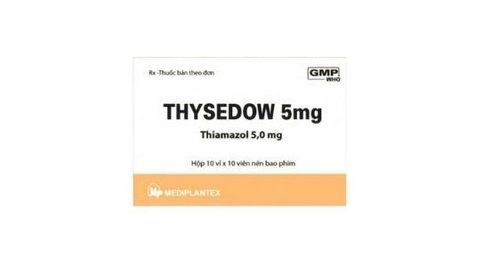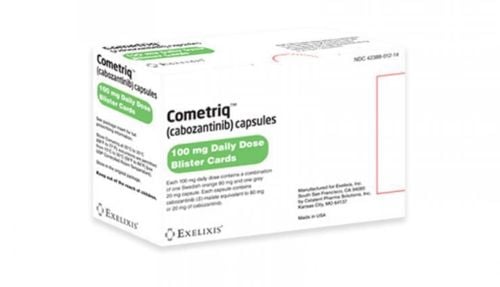This is an automatically translated article.
Green vegetables are an indispensable food group in family meals, of which the most nutritious is kale, a vegetable originating from temperate countries and very popular in Vietnam. Kale is a rich source of nutrients, along with essential vitamins and minerals.1. The Origin of Kale
Kale was formerly from Greece and Rome, but recently kale has become a vegetable of relative economic benefit in the United States.
This special green-leaved plant has become closer to everyone since 2012, appearing on the menu of the famous Michelin restaurant chain and becoming the choice of food bloggers around the world.
Kale is gradually replacing other green vegetables to become an important ingredient in salads, soups or even made into snacks similar to chips.
Bon Appétit magazine even considers 2012 the year of kale and October 2, 2013 is recognized as "National Kale Day" in the United States.
2. How many types of kale are there?
Green kale and lacinato kale (also known as dinosaur kale or Tuscan kale) are the 2 most popular types of kale. However, there are actually many different varieties of kale with many unique colors, flavors, and ingredients.
Among them, redbor kale is characterized by dark purple curly leaves. Russian kale has green-blue or purple-red leaves and has a slightly sweet taste. Siberian kale is recognizable by its large, green leaves to withstand extreme cold climates.
A special variety in Asia is Chinese kale (also known as Gai Lan or Chinese broccoli) which is a substitute for common broccoli in many dishes.
Kale belongs to the Brassica oleracea family and is similar to broccoli, cauliflower, cabbage, collard greens, broccoli and Brussels sprouts. There is also another vegetable of this cruciferous family that has been recognized as Cruciferae or Cruciferous because the sprouts are similar in shape to a crucifix.
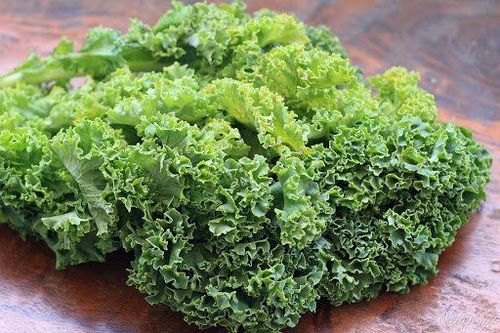
Cải xoăn thuộc họ Brassica oleracea cũng tương tự như súp lơ xanh
3. Nutritional composition inside kale
Kale is nutritious because it is rich in the following substances:
Minerals such as vitamin K, vitamin C, vitamin A and Vitamin B6; Certain types of carotenoids such as lutein and zeaxanthin; Rich in folic acid; Manganese; Fiber;
4.What are the health benefits of kale?
4.1. Kale with cancer and heart disease Cruciferae, including kale, contain phytochemicals called glucosinolates. This is a sulfur-containing compound that, if chewed, chopped or cooked, breaks down into two substances, isothiocyanates and indole-3-carbinol.
Under normal conditions, glucosinolates are the first line of defense for kale from environmental influences and other organisms (eg insects, fungi or arid climates).
In humans, glucosinolate analogues are being studied for their potential effects on chronic diseases such as cancer and heart disease. Several laboratory studies have shown that isothiocyanates and indole-3-carbinol have anti-inflammatory effects, inhibit the growth and metastasis of cancer cells, and protect healthy cells.
Studies done in small groups of people over a certain period of time have shown that kale has a protective effect on cancer and cardiovascular health, but the results are between Different studies are often inconsistent.
This inconsistency can be due to a number of different reasons. First, the research designs and methods are not the same. For example, different methods of processing kale alter the absorption and bioavailability of isothiocyanates and affect their ability to affect disease.
The second reason may have to do with genes because the metabolism of isothiocyanates is different between some people. The latter reason may be related to the amount of kale consumed among the non-homologous study populations resulting in insufficient impact on disease risk.
Therefore, more and more extensive studies on kale are needed to conclude its effects on cancer and cardiovascular disease.
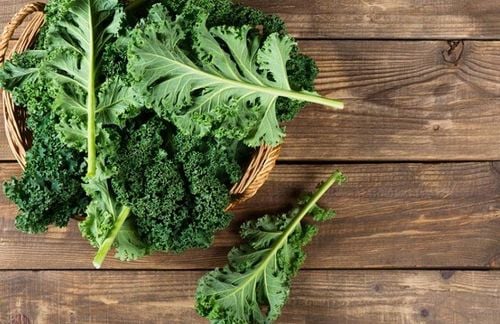
Rau cải xoăn rất giàu giá trị dinh dưỡng
Specifically, each week should consume at least one and a half cups of dark green vegetables, including kale.
4.3. Kale and Anticoagulants For patients taking antiplatelet or anticoagulant drugs to prevent blood clots, there may be concerns about eating kale and dark green vegetables rich in vitamin K. This particular vitamin is part of the body's blood clotting process, so consuming a lot of vitamin K can interfere with the effects of anticoagulant medications.
However, this group of patients can safely use kale if they follow the requirement to consume the same amount of kale every day so that the doctor can adjust the dose of the drug to balance the amount of vitamin K the body enters. and does not affect the effect of the above drug group.
Ideally, patients who are taking anticoagulants should visit their doctor for the most thorough consultation, especially the participation of clinical nutritionists.
4.4. Kale and Goiter People who regularly eat kale should pay attention to the amount of goitrogen present in this vegetable. Goitrogens are natural substances that limit the entry of iodine into the thyroid gland. Iodine is an important component for the synthesis of thyroid hormone to serve the body's normal needs. Therefore, the lack of iodine in the thyroid gland will cause the body to lack thyroid hormone, thereby making the thyroid gland compensate by increasing its size and forming a goiter or an enlarged thyroid gland.
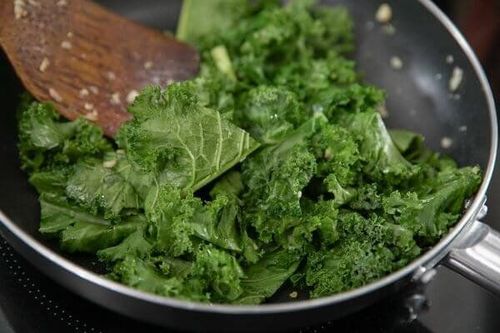
Cải xoăn có thể chế biến thành nhiều món ăn ngon
For people with good health, eating enough iodine and good iodine absorption, the amount of goitrogens in kale does not affect the body's activities much. The main concern is that in the group of people with an underactive thyroid gland, the normal amount of thyroid hormone is not enough, the addition of goitrogens (especially in the raw form) found in kale increases the likelihood and risk of developing goiter.
Patients with hypothyroidism due to iodine deficiency are the group at highest risk of disease. To limit the absorption of goitrogens, cooking kale is necessary to inactivate the goitrogens-metabolizing enzyme and induce goitrogenic effects.
In addition, consuming other green vegetables in the daily diet in addition to kale also helps limit the absorption of too many goitrogens.
In case you are having a certain health problem but want to add kale in your daily diet, you should consult with experts. Because kale brings a lot of nutritional value and fiber, but it needs to be used for the right purposes and objects to achieve the best results.
In addition to nutrition, parents should supplement children with supporting products containing lysine, essential micro-minerals and vitamins such as zinc, chromium, selenium, and B vitamins to help fully meet nutritional needs. substances in children. At the same time, these essential vitamins also support digestion, enhance nutrient absorption, help improve anorexia, help children eat well, and develop comprehensively.
Please regularly visit Vinmec.com website and update useful information to take care of your baby and family.
Source: hsph.harvard.edu





